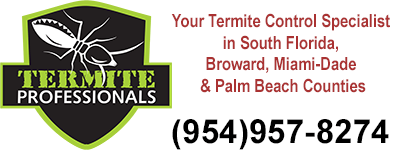What Is Vikane® Gas Fumigant?
Vikane® gas fumigant is the No. 1 brand in whole-structure termite fumigation. A proven drywood termite treatment option for more than 55 years, it has protected more than 2 million homes, historical landmarks, churches, museums, research facilities, colleges, hotels and even ships.
Fumigation with Vikane® finds every nook, every cranny, every termite. Leaving your home 100 percent free of those destructive, unwanted houseguests. And because it does not leave behind surface residue there’s nothing left to worry about.
With Vikane®, It’s One and Done
There’s Only One Path to 100 Percent Elimination
Drywood termites cause an estimated $300 million in damage each year in California alone. They also destroy properties in Florida, Gulf Coast states and Hawaii. Structural fumigation is recognized as the only proven way to eliminate all drywood termites from a building, according to university researchers, state regulatory agencies, home mortgage lenders and pest management professionals.
Structural Fumigation is Essential
Whole-structure fumigation is the only termite treatment that can ensure 100 percent elimination of drywood termites. Any building with wood in the structure is susceptible to infestation.
A treatment with Vikane® gas fumigant penetrates all air spaces inside the structure, including inside the infested wood. It’s why structural fumigation is the only proven way to get 100 percent drywood termite elimination.
Drywood vs. Subterranean Termites
It is important to know the difference between drywood and subterranean termites. The critical distinction is where they live. As the name implies, subterranean termite colonies live in underground nests where they get the moisture needed to survive — they will rapidly die if exposed to open air. In contrast, drywood termite colonies live completely inside wood in coastal areas where humidity is high.
Inspections and Treatments
Because subterranean termites live in the soil and must move from there into the home for the wood they attack, detection is possible by focusing the inspection on the gap between the ground and the wood above. Treatment is done either by creating an insecticide soil barrier around and beneath the home or by installing termite bait stations to eliminate the colony altogether.
Because a drywood termite infestation is contained entirely inside the wood, detection can be difficult for even an expert. Common evidence of a drywood infestation may include small piles of “frass” (termite excrement) found directly below “kick-out” holes in the wood or the wall above. Other evidence includes live termite “swarmers” (reproductives), discarded wings or visible damage to wood. However, if the infestation is in roof rafters or other areas where physical inspection is impossible, the colony will continue destroying wood from the inside out until the infestation becomes severe enough to finally be observable. Only structural fumigation is proven to eliminate all infestations.
